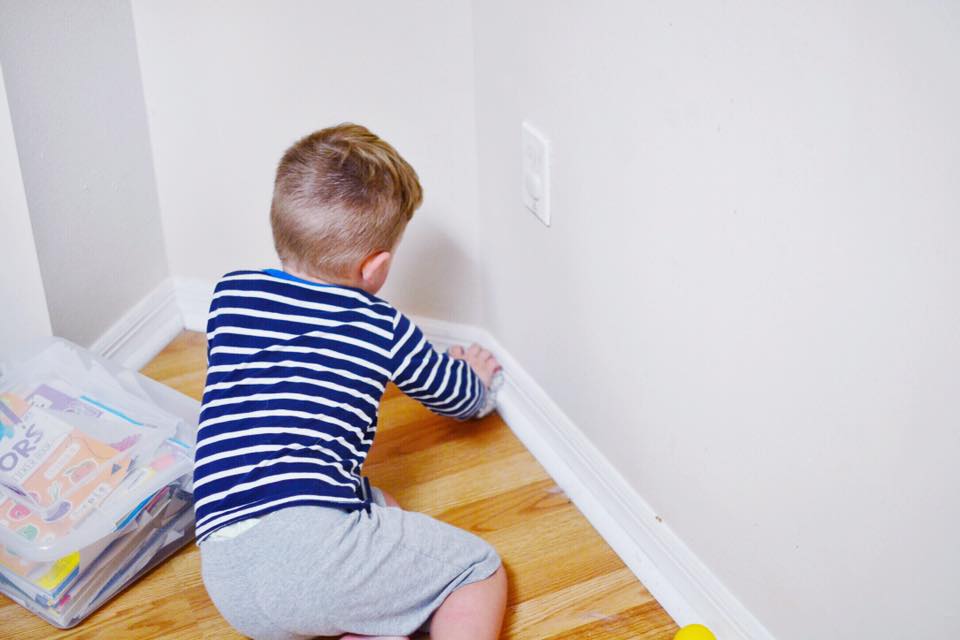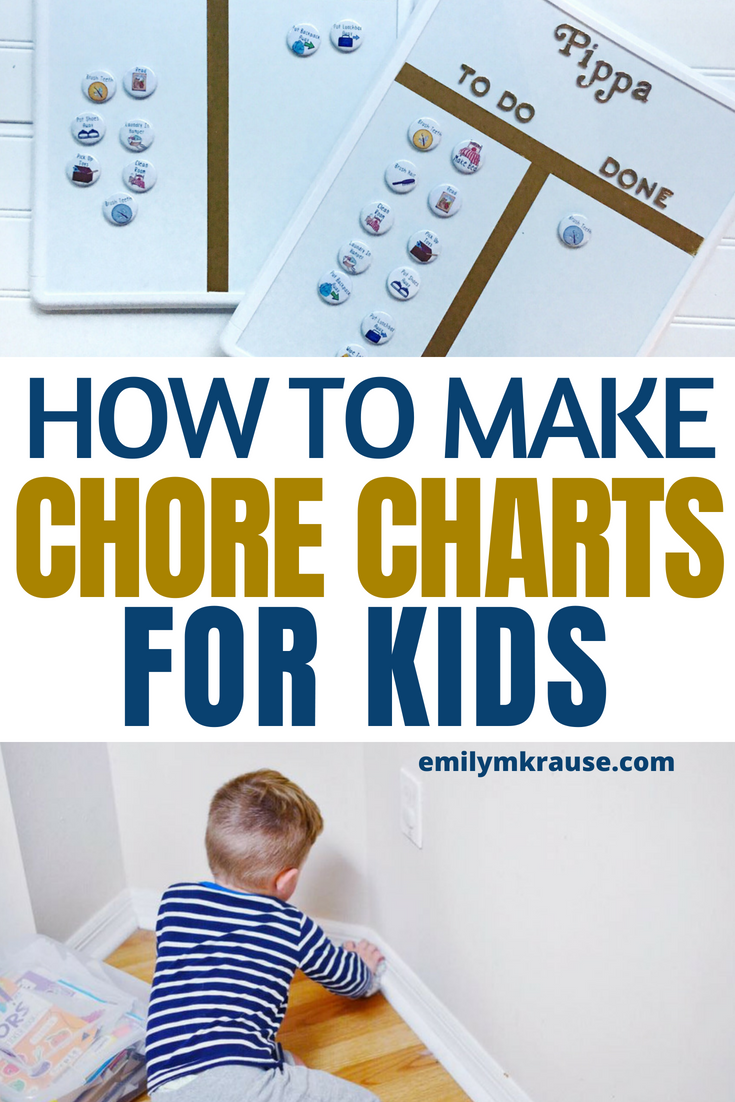how to make a chore chart for little kids
This past year, my oldest was in half-day preschool, which meant that we had to be out the door every day around 12:15. Yes. I had to get three kids ages 0, 2, and 4 out the door right at lunchtime and perilously close to nap time.
Needless to say, our house felt chaotic and stressful during the hour leading up to our departure. I would frantically try to clean up the kitchen from lunch while simultaneously packing bags and backpacks and filling water bottles. I would walk into the living room and see a mess of toys and become furious. Meanwhile, the kids would be playing and making more messes. Something wasn't quite right with that scenario.
One day, feeling frazzled and underappreciated during preschool dropoff, I came back home to put my younger 2 down for a nap and thought long and hard about how I was choosing to parent these little ones. I was choosing to do everything for them. I was choosing to become frustrated when I couldn't get them fed, cleaned up, packed up, and out the door on time. I was even yelling at them for little things like asking me to put their shoes on as we were about to walk out the door.
That was not the parent I wanted to be.
I decided to make a change, and that change came in the form of chore charts. When I really thought about the type of kids I wanted to raise, I realized how much I valued hard work, kindness, and responsibility. I wasn't going to get that result by doing everything for them and then yelling at them because I was stressed.
So I created the chore charts and began teaching them how to do things for themselves. Packing lunches and snacks for school, putting away shoes, picking up toys - suddenly those things became their job, and they were excited about it! My husband and I began fostering an environment of teamwork around chores. We all clean up together after dinner. We all pack our things for the next day before bed. We all participate in 10-minute pick-ups so that our house (that we all live in together) looks nice.
I have since discovered that the research behind giving kids chores and responsibility starting at an early age is overwhelmingly positive. They begin to feel a sense of pride for what they can accomplish, they learn teamwork, and they become independent teens and adults, which is what we're aiming for, right?
The chore charts have made an incredible change in our home. I still have to be involved with helping the kids out with their chores because they're so little, but I feel like I'm laying the groundwork for the years to come. The mornings (for the most part) have been running much more smoothly, and cleanup at night goes much more quickly.
If you're ready to make a similar change for your family, I'll show you how I put together these chore charts and which chores to include for each age level. Keep in mind, I am the least "crafty" person on earth, so if I can put these together anyone can!
How to Make Chore Charts
MATERIALS
SETUP
I wanted the simplest way possible to set up these chore charts, and even though my children love stickers, I wanted to avoid a sticker chart as much as possible because I didn't want to be peeling them off of every surface of our home.
I decided on magnets to signify which chores they had to do. This way, even the youngest toddler could move their chores from the "to do" column to the "done" column. I could also add or take away chores from their charts without having to redo the whole thing.
I grabbed a couple mini whiteboards, and found some beautiful gold Washi tape and matching gold letter stickers at Target (I'll link to similar ones). I used the larger, fancier letter stickers to put their names at the top, then used the smaller, simpler ones for the "done" and "to do" columns. Finally, I divided the two columns with Washi tape.
THE MAGNETS
I found the perfect chore chart magnets on Etsy. They have pictures and words on them so that even toddlers can tell what they need to do. They're affordable, so I can add more as the kids get older. The only thing I would change about them is making them slightly larger since the baby has been reaching for them and tried to put one in his mouth. (We moved them up higher after that).
Finding Age-Appropriate Chores
When we started the chore chart, my kids were 2 and 4. There's not a lot a 2-year-old can do independently, but it's a great age to be learning about daily routines and how to help clean up the messes he made. My 4-year-old was a little bit more independent, so I gave her a few extra jobs. I did still include daily routine items for her since I was sick of asking her if she had brushed her teeth and getting into fights about her tangled hair.
Only you can decide which chores are appropriate for your kids and your situation, but I can definitely give you a few ideas!
TODDLERS
brush teeth
brush hair
get dressed
put on shoes
pick up toys
put away backpack (if they go to daycare or preschool)
put away lunchbox (if they go to daycare or preschool)
put away shoes
put away dishes (we keep plastic plates and cups down low for the kids to reach, so they are responsible for putting them away when they come out of the dishwasher)
put dirty clothes in the hamper
feed the dog
set the table / clear the table / wipe down the table
make the bed (our toddler is still in a crib, so we don't do this one)
PRESCHOOLERS AND KINDERGARTENERS
4-6-year-olds can do all of the above, plus...
help load/unload the dishwasher or rinse dishes
put away laundry
clean up room
pack lunch for the next day
read for 20 minutes
sweep
wipe down counters
EARLY ELEMENTARY SCHOOL
fold laundry
dust
vacuum
clean mirrors and windows
empty trash cans
help prepare food
homework (with supervision)
CHORES AND PAYMENT
We decided to put everyday chores on their chore charts - these are the chores and routines they are expected to do just as a citizen of our family. They don't get paid or rewarded for those.
We put another mini whiteboard on the fridge with bigger more time-consuming chores the kids can choose if they want to earn money. Those are chores like wiping baseboards, helping Dad clean out and wash the car, and pick up 10 items around the house. We keep a running tally. Each time they complete one of these chores, they get a point. They get $1 for every 5 points they earn.
So far no one has earned any money because they're little and money doesn't really motivate them. You could change that up and offer an ice cream date with mom or dad, a prize from the Dollar Spot at Target, or the privilege of picking the movie on movie night.
Remember: your kids are capable of so much more than you think. Lay the groundwork now while they're little, and everyone will reap the benefits as they get older and harder to mold. Good habits now will pay off in the future!

















